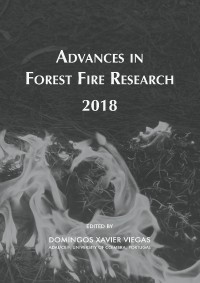Please use this identifier to cite or link to this item:
https://hdl.handle.net/10316.2/44570| Title: | Forest fire Preventing and Controlling Techniques in China | Authors: | Lifu, Shu Yangguang Hecheng Xiaorui, Tian Zhaofengjun Mingyu, Wang |
Keywords: | Fire prevention;China | Issue Date: | 2018 | Publisher: | Imprensa da Universidade de Coimbra | Journal: | http://hdl.handle.net/10316.2/44517 | Abstract: | The area of China is large and the natural environment is very complex. The average forest cover of per person is very low. Planted and secondary forest account for much proportion of overall forest, and forest fire is very severe. The occurrence of forest fire is impacted by many factors, as the forest fire in China is impacted by inter-annual variability of weather and the regional distribution of fuel, the forest fire in China is characterized by distinct spatial and temporal distribution. The provinces that have more number and burned area concentrate on the Northeast and Southwest of China, and impacted by atmosphere current and seasonal monsoon, the fire season of the two regions have distinct seasonal variance. Human caused fires dominate the most parts of all the fires.Since 1987, the Chinese government attaches great importance to fire management. But there are still many fires occurrence in China every year. For the period 200-2009, the yearly average fires were 9 493, which caused burned areas 333 796 ha. The yearly cost of fighting fires was 171 220 000 RMB (about 26 341 538 US$). Human activities were mainly attributable to the forest fire, occupying more than 98%. Most forest fires occurred in spring and autumn. Most fires occurred in southern China, accounting for 52% of the total each year, 37% in the southwest, 6% in northwest, and 4% in northeast and inner Mongolia, and 1% in other areas. It is expected the average temperature in northeastern China could increase 2.22°C in scenario A2 and 2.55°C in the 2040s in scenario B2. That may cause the potential burned area will increase by an average 3% and 20% in 2040s under scenario A2 and B2, respectively. The fire season will prolong on average by five days and 18 days in the 2040s under scenario A2 and B2, respectively. Measures were made for reducing the fires, such as improving the organization system, fire equipments, strengthening fire monitoring and developing the fire research, ect. | URI: | https://hdl.handle.net/10316.2/44570 | ISBN: | 978-989-26-16-506 (PDF) | DOI: | 10.14195/978-989-26-16-506_53 | Rights: | open access |
| Appears in Collections: | Advances in forest fire research 2018 |
Files in This Item:
| File | Description | Size | Format | |
|---|---|---|---|---|
| forest_fire_preventing_and_controlling_techniques.pdf | 696.67 kB | Adobe PDF |  |
Items in DSpace are protected by copyright, with all rights reserved, unless otherwise indicated.
